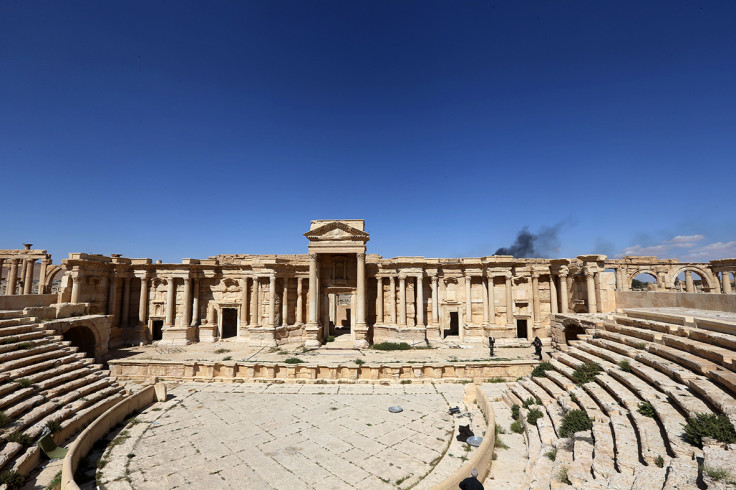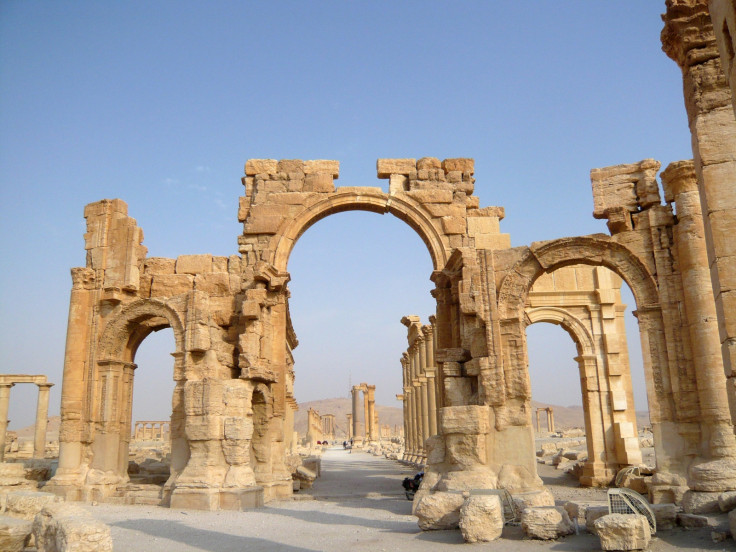Why Palmyra was such a spectacular and unique archaeological site
The city's major monuments were destroyed by so-called Islamic State who took back the city this week.
The ancient city of Palmyra in Syria was recaptured by the so-called Islamic State (Isis/Daesh) on 11 December. Syrian officials have now announced the group has destroyed part of the Roman amphitheatre, which had so far remained relatively untouched compared with other archaeological landmarks.
Before Palmyra was ravaged by the war, it stood as one of the most important cultural centre of the ancient world. Its monuments displayed impressive artistic and architectural features associated with several different civilisations. It remains on the UNESCO World heritage list.

"Palmyra was worth being on the UNESCO list because it was one of the best preserved classical sites anywhere, it had a lot of unique architecture, which combined many different cultural elements, from the near-East, Europe and elsewhere", Mark Altaweel, reader in Near East Archaeology at UCL, told IBTimes UK.
The history of Palmyra is very ancient and goes back to Neolithic times. First mentions of the site are documented on tablets that date as far back as the 19<sup>th century BCE. However, Palmyra rose to prominence when it was established as a caravan oasis, after it came under Roman control in the mid-first century AD as part of the Roman province of Syria.
While the city lost some of the former autonomy that it had enjoyed for much of its early history, it also became an important point of passage situated on the trade route between the East and the West.
It connected the Roman world with Mesopotamia and other Eastern civilisations like China and India, so it quickly turned into an important cultural hub, and a crossroads of the different civilisations of the ancient world. "It was a diverse place of traders connecting the incense route and silk road and for this reason, it was wealthy", Altaweel added.

Palmyra was also the capital of Queen Zenobia's Empire – the legendary queen who dared challenge the authority of Rome.
Monuments with multiple cultural influences
The different cultural influences that shaped the city were visible in all of Palmyra's landmarks.
A grand colonnaded street formed the monumental axis of the city, linking together Palmyra's most important monuments such as the Temple of Ba'al, the Agora, the Theatre, other temples and urban neighbourhoods. Architectural ornaments of these structures combined Greco-roman art with indigenous and Persian influences, giving the city a very original and unique style.
Remembering Palmyra
Because the so-called Islamic State believes ancient temples and artefacts to be idolatrous, there was great concern that the group would cause significant damage when it occupied the town in May 2015. In August 2015, they beheaded the archaeological director of the city before turning against the city's buildings.

That same month, the group released pictures that appeared to show the Temple of Baal Shamen being demolished with explosives, and in September 2015 the United Nations released satellite photos showing the Temple of Bel nearly completely destroyed. The terrorists also demolished Palmyra's arch and funerary towers that gave it a distinctive skyline. The Roman Amphitheatre has now joined this list.
Archaeologists around the world have condemned the destruction of the site, saying that it was "unique and irreplaceable". Digital reconstructions of the site may nevertheless be possible based on pictures taken over the years, allowing for the reproduction of the monuments – in September 2016, a copy of Palmyra's arch was unveiled in New York.

Dr Emma Cunliffe, an archaeologist whose studies focus on the damage sustained by archaeological sites in the Middle East in peace and war, told IBTimes UK: "The recent 3D reconstruction of Palmyra's arch has given us hope, it has shown that not everything is lost. However, most of these 3D reconstructions are done from tourist pictures and not from images carefully taken in the context of archaeological research, so it is not known how far we will be able to rebuild all the other buildings".
© Copyright IBTimes 2025. All rights reserved.






















